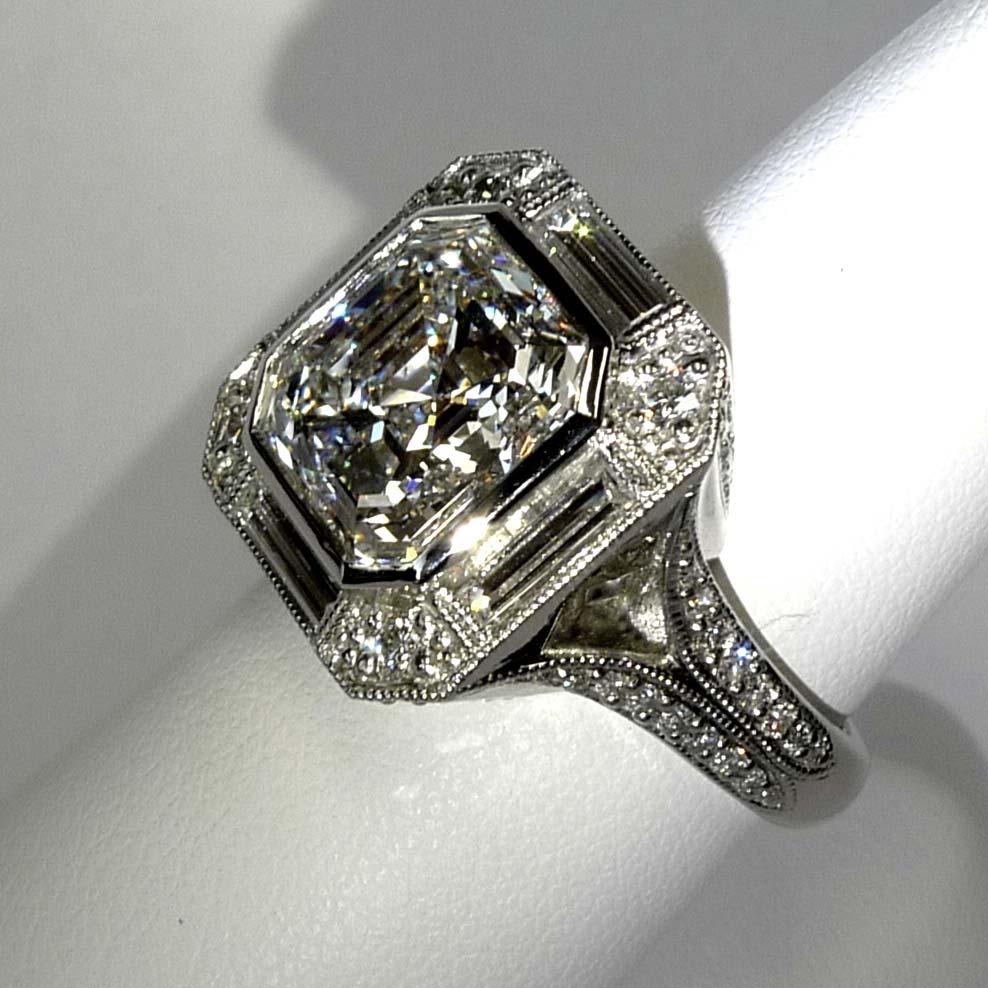A natural beauty
Since the dawn of civilization men and women have been captivated by its spell and splendor. throughout the ages this mystical white metal has been used to mark historical milestones, celebrations, achievements and special occasions.
Silver Basics
Silver is an element that occurs naturally in the earth and is generally considered too soft in its pure form for practical use in jewelry, giftware or flatware. An alloy such as copper is usually added to make the metal workable for jewelry.
Silver is an element that occurs naturally in the earth and is generally considered too soft in its pure form for practical use in jewelry, giftware or flatware. An alloy such as copper is usually added to make the metal workable for jewelry.
-
Sterling
92.5 percent (925 parts) pure silver and 7.5 percent (75 parts) alloy metal. Sterling is the primary material used for this type of jewelry, giftware, holloware and flatware.
-
Coin
90 percent (900 parts) pure silver and 10 percent (100 parts) alloy metal. As its name implies, it was used to produce U.S. currency during the 19th century. It is no longer a commonly used material.
-
Vermeil
Pronounced “vermay,” vermeil is a French word describing sterling silver that has been electroplated with at least 100 millionths of an inch of karat gold.
-
Flatware
knives, forks, spoons and various serving utensils made of the white metal are commonly referred to by this term.
-
Holloware
Tableware which is larger than flatware and is designed to function as containers and decorative pieces. This category includes bowls, vases, serving dishes, trays and candlesticks.
-
Giftware
Decorative and functional objects such as picture frames, desk accessories, key rings and vanity items.
How to Buy Silver Jewelry & Gifts

Sometimes a piece will be stamped with “925,” “.925,” or “92.5” These are appropriate markings. They assure you that you are buying genuine sterling jewelry. Coin silver is labeled as “coin silver,” “coin,” “900,” “.900,” or “90,” signifying the piece contains at least 90 percent pure white metal. Any item that is plated must be labeled as “silver plated,” “silver coated,” or “plated with silver.” In addition, the plating must be of sufficient thickness to ensure durability. Vermeil must have sterling silver base and a plating of at least 100 millionths of an inch of karat gold. Only items meeting this definition can be labeled “vermeil.” Look for the manufacturer’s trademark or hallmark on items.
In addition to quality marks, trademarks and hallmarks give you information about your purchase. Your professional jeweler can explain all of these markings to you in greater detail. Silver jewelry and gift items are priced based on their precious metal content, design and craftsmanship. A price based solely on weight and metal content does not reflect the work that has gone into the piece. Each piece of jewelry is unique and, if cared for properly, can last a lifetime. When purchasing a piece of jewelry or a silver gift item, look for quality construction. Inspect the piece carefully. Pay special attention to fasteners or clasps, making sure catches work easily but are secure. Pin backs and earring posts should be strong and firmly attached to the piece with no visible marks. Lay chains flat to make sure links don’t kink or bend. For gift items, make sure hinges, locks, picture stands, and other items are securely attached and function properly. If purchasing silver-plated items, inspect the piece to ensure that the plating is of the appropriate thickness and covers the entire piece.
Caring For Your Silver Jewelry
The beauty of sterling silver jewelry and gifts is part of this metal’s ageless appeal. Properly caring for your collection is a sure way to keep sterling looking its shining best.
As with any fine jewelry or gift item, each piece of it should be stored individually, ether in its own soft pouch or in a separate compartment in a jewelry or storage box. The beauty of sterling silver jewelry and gifts is part of this metal’s ageless appeal. Properly caring for your collection is a sure way to keep sterling looking its shining best. If you toss your jewelry into a dresser drawer and allow pieces to rub against each other, scratches will result. Keep it in a cool, dry place. Sterling silver, like other precious metals, can oxidize with time. It is a good idea to store it in a tarnish-proof cloth or in drawers lined with tarnish resistant strips. If sterling does become tarnished, it is easily restored to its original gleam by using a paste, liquid polish, or a treated polishing cloth intended for use on this metal. Or you may simply wash the jewelry or sterling object with warm water, rubbing in a little soap or toothpaste, rinsing and then patting dry with a fine soft cloth. Avoid using tissue paper or paper towels as they can scratch sterling. Your professional jeweler should be able to provide you with cleaning materials specifically for the metal as well as directions for their proper use. The best way to prevent tarnish is to actually wear your sterling jewelry or use your items often. However, don’t wear this metal in chlorinated water or when working with household cleaners such as bleach or ammonia. Treat your pieces well and it will actually develop a lush patina and will reward you with a lustrous look.





